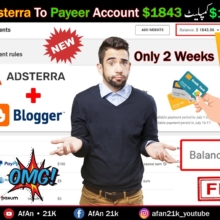Week 0 – Course Introduction Video
George Siemens Hi, everyone Welcome to pivoting online. We want to take a scientific and a practitioner lens on what it means to teach online and what some of the experiences are that you might be able to expect.
You will encounter it, but also be aware that your students will encounter it as well.
This is a short introductory video that gives you a little bit of a sense of how we’ve structured the course, and some of the topic areas that we’re going to be going through, And hopefully it’ll.
Give you a little bit of a sense of your opportunities to contribute your opportunities to engage with colleagues and also the kind of community or environment that we want to create in this course as well.
We’re fortunate to have several researchers from different universities, both in the US and in Australia who have deep expertise in the experience of teaching online teaching at a distance teaching remotely Pick whatever word you, ‘d like to use, But essentially it’s a reality that many faculty members are facing now, which is you’re moving online? The experience is likely stressful for many of you, And we want to provide a simple introduction that is based solidly on research in the topic area, so the main motivation of the course is to communicate the strength of this existing research base.
We want to let you know that the practices that you take on when you’re teaching online have an excellent base in existing research and when you choose to use video over text interaction when you choose to use a social component in your course rather than A lecture component that you can make those decisions with a solid research base And we want to create a community around that for you to be able to bounce ideas off and get answers to as well.
Another point is that teaching online is quite different from teaching in a classroom.
It’s not better.
It’s not worse.
It’s just different. There are different ways of interacting and different ways of communicating, And we want to communicate some of those dynamics to you as you begin to make that transition.
We also want to emphasize that simple changes in your practices can have a positive impact on you and your students as well.
It’s a lot of uncertainty, no doubt that you’re feeling And your students are probably even more uncertain of what’s going on.
So this opportunity here to take a limited number of effective practices that have a research base can hopefully improve the results and the outcomes for you and your students as well.
Now we structured the course to run roughly six weeks.
The first week, which starts on March 16, is for lack of a better word, a type of boot camp.
We’ll have a daily lecture every day that will cover a key topic just to help get you oriented to what you’re sort of up against.
As you’re making this transition From there, we’re going to do a deeper dive.
Each of the following weeks, We’ll talk about how to get online quickly.
What are some of the key things you need to consider? We’ll give you some support guidance and a conversation space to bounce your ideas. Week two looks specifically at creating content.
What does it mean to engage with different types of tools to share the kinds of curriculum that you want to create, or to do the kind of interactions that you’re, hoping to foster with students and the main topics of the course Once you get into Week three, it’s an emphasis on the social dynamics of getting learners to connect, getting learners to begin to think in networks, rather than to consume content that’s been provided to them Week.
Four, we turn to some of the mindsets of success, which is really: how do you create a culture of care for lack of a better word that enables your students to feel well to feel that there is an environment that supports them, Recognize that especially in Some of the chaotic cycles that individuals are in right now fear the uncertainty that they face, knowing that there is an underpinning of caring concern, for others can go a long way both for yourself and also for your students And then in our fifth week.
We’ll talk about it once things have settled more And we begin returning to the classroom, which is unclear.
It could be a few months, It could be not until fall, It could be longer.
What does it mean, And how do you begin to prepare to move back to class environments That’s a key point that we’ll tackle in the final week This next week, though, and again, this starts probably today for many of you when you see this We’re going to begin on Monday, with planning and design focus, which will talk about some of the aspects of communication and connecting with your students And two of the instructors in this course.
Tanya Joosten and Matt Crosslin will address those particular topics On Tuesday we’ll start looking at some of the tools.
What do you need to be aware of when you’re, selecting the tools and technologies Negin and Justin will provide an overview, And these are short introductions.
We want to be aware that your time is at a critical threshold right now.
It’ll be about a 10-minute presentation for each of these, followed by some discussion On Wednesday. We’re hosting a student panel.
Essentially, this is going to be an opportunity to hear the experience of students who have learned online And what is that experience? As for Thursday, we’ll dive into more of the interaction component, looking at promoting active learning and promoting engagement, And then on Friday, a quick overview of assessment and evaluation again with Matt and Tanya.
This gives you just a quick.
These are key things to think about introduction.
Each of the webinars is run starting at 4, 00 PM the Texas time zone, so Central Standard time zone they’ll all be recorded and made available as soon as they’re finished A regular week, though, once we start with week one so As I mentioned, this next week is just giving you these five weekly topics, one each day After that, each week we’ll do a deeper dive And the weeks have a range of content resources for you to be aware of.
On the one hand, we’ll start with a series of expert interviews with both researchers and practitioners.
These are some of the most experienced people that we know in either conducting research in digital online distance learning spaces, as well as practitioners who have significant expertise in how to promote and foster interaction.
Online.
We’ll provide key readings that are reflective of the literature.

In that domain, and also provide a summary of the nature of that research, There will be some guidelines around demonstrations. Sometimes it will be around specific tools to use.
We’re not going to focus on recreating resources.
We tried to share and direct you to additional resources, But it’s easy to quickly become overwhelmed.
There are so many things being shared right now.
We want to provide what we think is the best match between what we know about the research and the research evidence and what we have for topics and practices that you can utilize.
We’ll also promote a series of activities that you can engage in to help build your skills in the respective topics, And that may require that you create some resources, share them back with other participants in the course, And we’ll also have a regular Live discussion that goes on every week.
It’ll be a chance for you to connect with the people teaching this course and allow us an opportunity to address any of the questions that we’ve encountered on social media, Twitter, and discussion forums.
A lot of it, though, and you’ll find this is the case with your students when you begin teaching more actively online.
A lot of the interaction happens with peers, And you’ll have that in this course as well, And that’s the same experience that your students will have when they’re taught in their courses.
Now our focus is pretty straightforward. We want to give you a framework to get started.
There are a mess of frameworks and a mess of perspectives that can help guide you.
As you move into digital environments, We’re going to emphasize one that we find is an effective one.
The community of inquiry model We’ll talk about that early on in the course to give you a better sense of what it’s about.
We just want to give you something on which you can hang your ideas and hang your practices.
We also want to create a bit of a support system.
It’s stressful, to begin teaching online.
When you have limited experience – And many of you may not feel confident.
Many of you are also dealing with concerns of health for yourself for your family.
For other people in your lives, for whom you’re responsible, So hopefully we can provide a little bit of pressure relief regarding your teaching practices so that you’re better able to equip better equipped to deal with them. Those related stresses that you’re facing, And so you want to have a space where we can form some sense of community the degree to which that’s possible in this kind of a situation and allow you to know that what you’re doing in your classrooms online has an evidence base behind it.
So the third point is an environment that helps to promote the current research.
Now your focus we’re advising is you focus on not expecting perfection Just get started.
This isn’t normal These aren’t normal times, And many of you still have universities that are running physical classes, But you’re beginning to prepare your online environment.
Some of you are already starting online and may need a bit of additional support or space to throw around some ideas and get some questions answered.
I also think it’s really important to recognize the emotional states of your students during this time and your emotional states being aware that we all have needs for care and compassion and self-compassion, So particularly aware of the emotional dynamics of this.
While you’re involved in making this transition for yourself, Authentic engagement is key as well.
I think there’s a natural approach.
Many of us that have spent a lot of time in university classrooms are comfortable lecturing promoting some level of student engagement.
You’ll find online lectures. Don’t work well, Your students, don’t want three hours of Zoom lectures Short concise topics presented with an intent to promote group-based interaction and peer-based learning are often more effective And we’ll get into that throughout the course as well.
In many regards use what’s available, There are a large number of OERs that you can access.
They’re freely available online.
We’ll start talking about different content spaces where you can find these resources and how you can share those with your students And then the degree to which you do have time feel free to join online and share the tag PivotOnline as a way to share With other colleagues other individuals who may benefit from the topic of this course, So with that as a really quick overview, this gives you just a rough sense of what we are hoping to provide a bit of guidance for you.
We had the idea of pulling this course together in reasonably short order as well, So we’re doing the course in a similar way that we’re talking about it.
All of us have spent a lot of time, teaching online and a lot of time engaging in digital learning technologies, So even then pulling this course together.
We’re having the same experience.
Many of you are having, which is there’s so much to do, and so many topics to address, And so we encourage you to dive in we hope to be a bit of a community provide some support and some of the research that can inform Your practices Look forward to learning with all of you,
Natural Synergy $47.⁰⁰ New Non-Invasive Alternative. To Electro-Acupuncture, Producing Astounding Results… Self-Application Is Easy, Rapid Response. You’re about to discover how both chronic and acute pain, skin conditions, migraines, and hundreds of ailments all stem from the same root cause. Yin Yang Ailments such as ➯➱ ➫ ➪➬ I want to give people an affordable option to kill pain naturally… without the fear of addiction. Treating the root cause of common diseases And reducing the need for harmful prescriptions that come with problematic side effects. So you’ll get everything for just $47.⁰⁰ That’s it.











